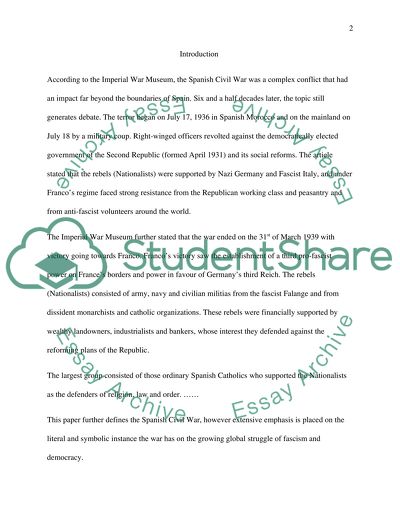Cite this document
(“How the Spanish Civil war became a literal and symbolic instance of Essay”, n.d.)
Retrieved from https://studentshare.org/environmental-studies/1410535-how-the-spanish-civil-war-became-a-literal-and
Retrieved from https://studentshare.org/environmental-studies/1410535-how-the-spanish-civil-war-became-a-literal-and
(How the Spanish Civil War Became a Literal and Symbolic Instance of Essay)
https://studentshare.org/environmental-studies/1410535-how-the-spanish-civil-war-became-a-literal-and.
https://studentshare.org/environmental-studies/1410535-how-the-spanish-civil-war-became-a-literal-and.
“How the Spanish Civil War Became a Literal and Symbolic Instance of Essay”, n.d. https://studentshare.org/environmental-studies/1410535-how-the-spanish-civil-war-became-a-literal-and.


